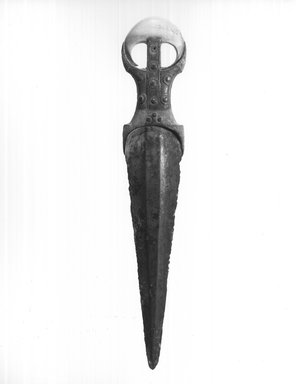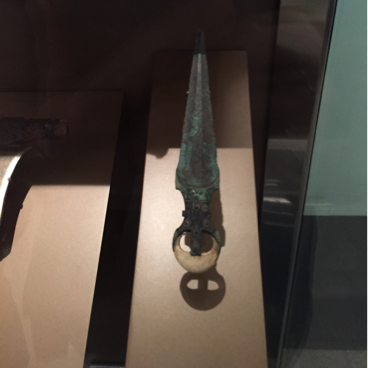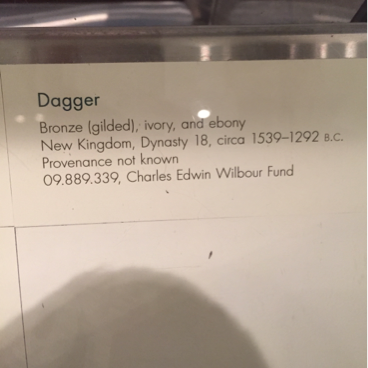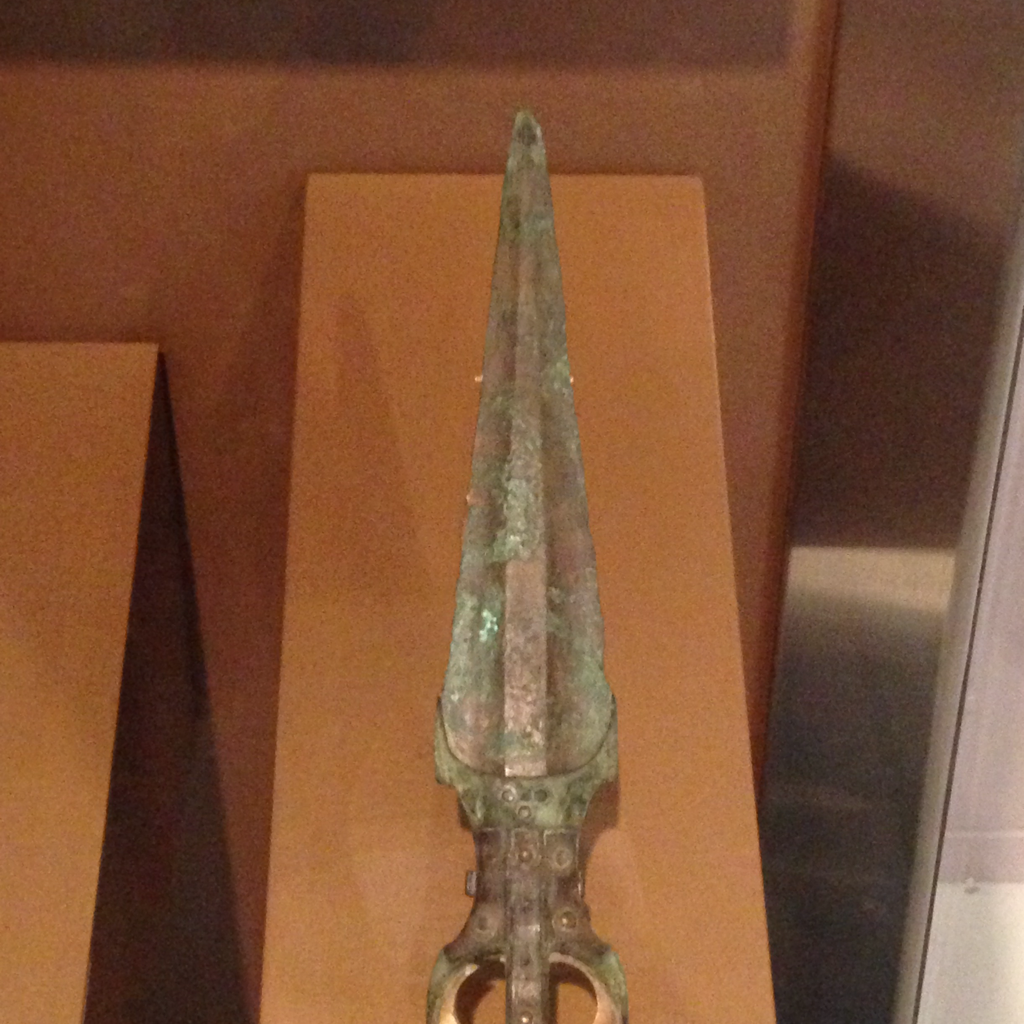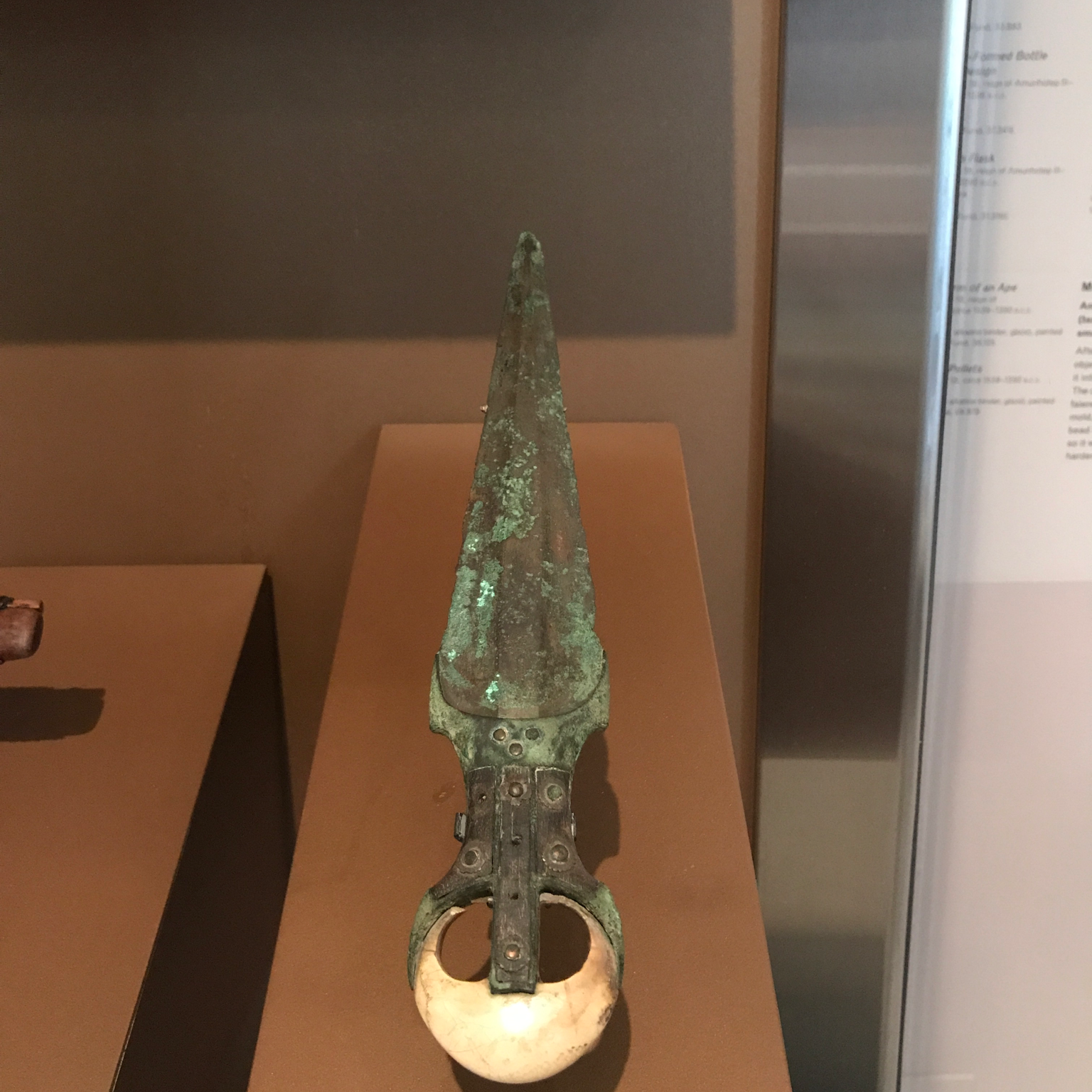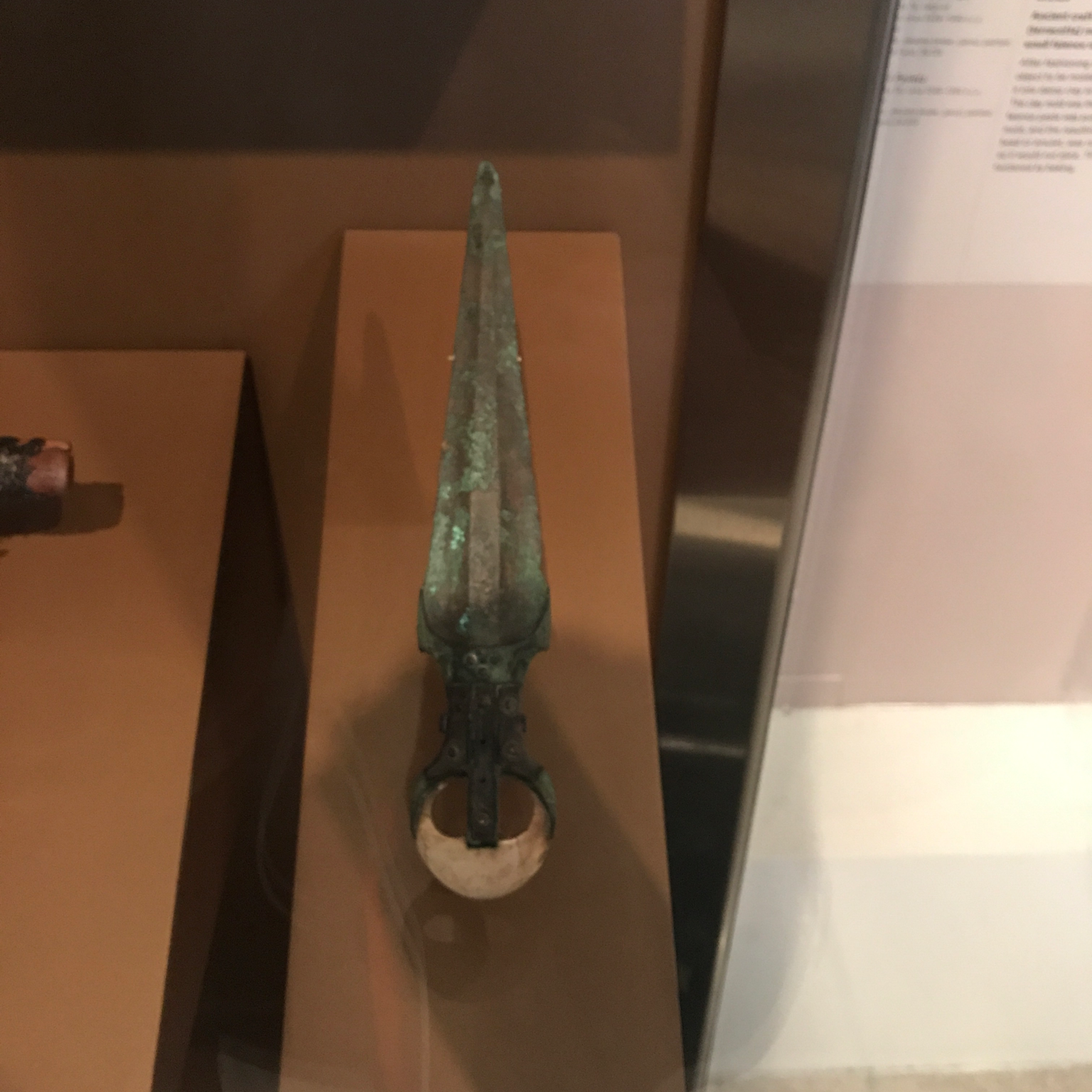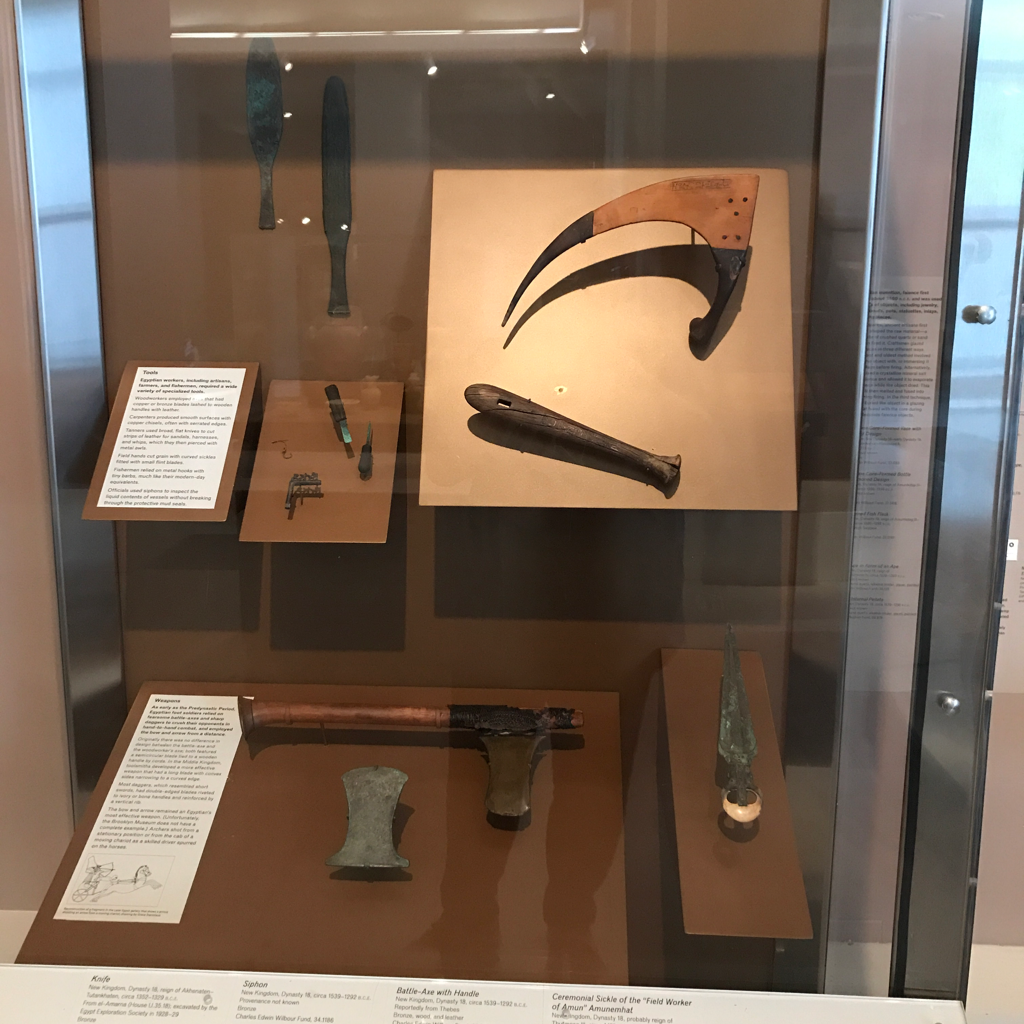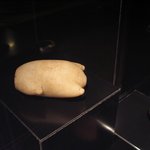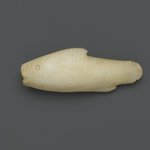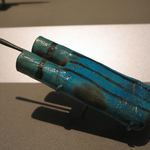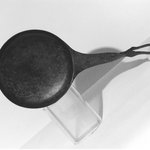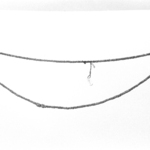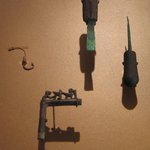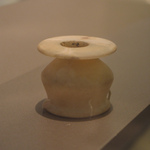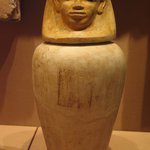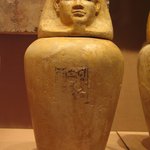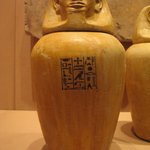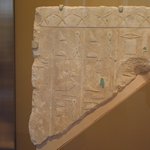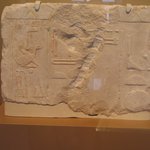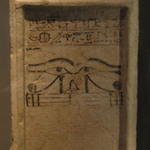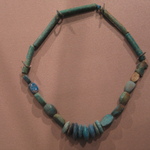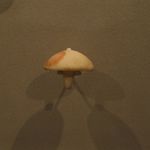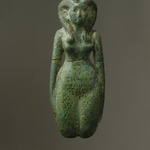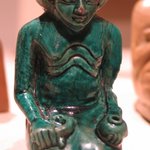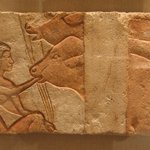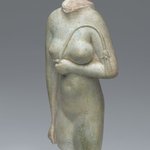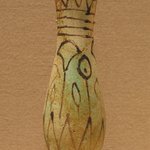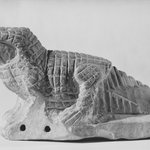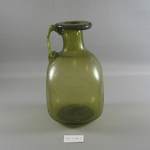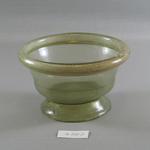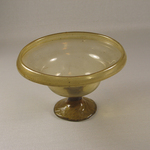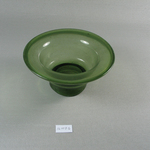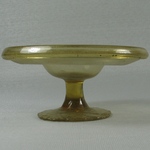

Dagger, ca. 1539-1292 B.C.E. Copper alloy, wood, metal, ivory, and leather, 2 1/4 × 5/8 × 11 3/8 in. (5.7 × 1.6 × 28.9 cm). Brooklyn Museum, Charles Edwin Wilbour Fund, 09.889.339. Creative Commons-BY (Photo: Brooklyn Museum, CUR.09.889.339_NegA_print_bw.jpg)
Dagger
Egyptian, Classical, Ancient Near Eastern Art
On View: Egyptian Orientation Gallery, 3rd Floor
Weapons
As early as the Predynastic Period, Egyptian foot soldiers relied on fearsome battle-axes and sharp daggers to crush their opponents in hand-to-hand combat, and employed the bow and arrow from a distance.
Originally there was no difference in design between the battle-axe and the woodworker’s axe; both featured a semicircular blade tied to a wooden handle by cords. In the Middle Kingdom, toolsmiths developed a more effective weapon that had a long blade with convex sides narrowing to a curved edge.
Most daggers, which resembled short swords, had double-edged blades riveted to ivory or bone handles and reinforced by a vertical rib.
The bow and arrow remained an Egyptian’s most effective weapon. (Unfortunately, the Brooklyn Museum does not have a complete example.) Archers shot from a stationary position or from the cab of a moving chariot as a skilled driver spurred on the horses. Reconstruction
As early as the Predynastic Period, Egyptian foot soldiers relied on fearsome battle-axes and sharp daggers to crush their opponents in hand-to-hand combat, and employed the bow and arrow from a distance.
Originally there was no difference in design between the battle-axe and the woodworker’s axe; both featured a semicircular blade tied to a wooden handle by cords. In the Middle Kingdom, toolsmiths developed a more effective weapon that had a long blade with convex sides narrowing to a curved edge.
Most daggers, which resembled short swords, had double-edged blades riveted to ivory or bone handles and reinforced by a vertical rib.
The bow and arrow remained an Egyptian’s most effective weapon. (Unfortunately, the Brooklyn Museum does not have a complete example.) Archers shot from a stationary position or from the cab of a moving chariot as a skilled driver spurred on the horses. Reconstruction
MEDIUM
Copper alloy, wood, metal, ivory, and leather
DATES
ca. 1539-1292 B.C.E.
DYNASTY
Dynasty 18
PERIOD
New Kingdom
DIMENSIONS
2 1/4 × 5/8 × 11 3/8 in. (5.7 × 1.6 × 28.9 cm) (show scale)
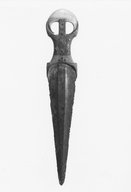


COLLECTIONS
Egyptian, Classical, Ancient Near Eastern Art
ACCESSION NUMBER
09.889.339
CREDIT LINE
Charles Edwin Wilbour Fund
PROVENANCE
Archaeological provenance not documented, reportedly from Fayum, Egypt; between December 1907 and January 1908, purchased in Cairo, Egypt by Henri de Morgan of Francescas, France and New York, NY; 1909, purchased from Henri de Morgan by the Brooklyn Museum.
Provenance FAQ
CATALOGUE DESCRIPTION
Bronze dagger with elaborate handle. Long, rather narrow triangular blade of bronze with straight sides, which sets the piece apart from its type, slightly blunted tip and on either face a flat, low but pronounced rather broad midrib, narrowing to tip and running down into it. Bronze handle, oblong, with indented sides and deeply indented ends, the horn of one of which enclose the shoulders of the blade, while the horns of the other overlap the opposing horns of the pommel, which is of ivory, crescent-shaped, with a median tongue meeting a tongue from the handle, so that on either side an oval hole is left, for passing through a thong. The handle is covered on both faces alike with three thin strips of ebony laid on longitudinal shallow grooves and fastened with large nails, their heads underlaid with small leather “Goodyear” rosettes: two on either side, four on the long median board. The handle is fastened to the blade with three smaller nails, forming an equilateral triangle, on either face. Excellent example of well-known type.
Condition: Good. Edges of blade jagged. Green patina in places. The two central studs are missing on one face of handle.
EXHIBITIONS
MUSEUM LOCATION
This item is on view in Egyptian Orientation Gallery, 3rd Floor
CAPTION
Dagger, ca. 1539-1292 B.C.E. Copper alloy, wood, metal, ivory, and leather, 2 1/4 × 5/8 × 11 3/8 in. (5.7 × 1.6 × 28.9 cm). Brooklyn Museum, Charles Edwin Wilbour Fund, 09.889.339. Creative Commons-BY (Photo: Brooklyn Museum, CUR.09.889.339_NegA_print_bw.jpg)
IMAGE
overall, CUR.09.889.339_NegA_print_bw.jpg. Brooklyn Museum photograph, 2013
"CUR" at the beginning of an image file name means that the image was created by a curatorial staff member. These study images may be digital point-and-shoot photographs, when we don\'t yet have high-quality studio photography, or they may be scans of older negatives, slides, or photographic prints, providing historical documentation of the object.
RIGHTS STATEMENT
Creative Commons-BY
You may download and use Brooklyn Museum images of this three-dimensional work in accordance with a Creative Commons license. Fair use, as understood under the United States Copyright Act, may also apply.
Please include caption information from this page and credit the Brooklyn Museum. If you need a high resolution file, please fill out our online application form (charges apply).
For further information about copyright, we recommend resources at the United States Library of Congress, Cornell University, Copyright and Cultural Institutions: Guidelines for U.S. Libraries, Archives, and Museums, and Copyright Watch.
For more information about the Museum's rights project, including how rights types are assigned, please see our blog posts on copyright.
If you have any information regarding this work and rights to it, please contact copyright@brooklynmuseum.org.
RECORD COMPLETENESS
Not every record you will find here is complete. More information is available for some works than for others, and some entries have been updated more recently. Records are frequently reviewed and revised, and we welcome any additional information you might have.

